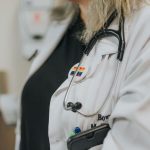Main comment is that the following section has multiple logical inconsistencies (as well as formatting inconsistencies, suggest a, b rather than 1, 2):
"2. A regulated member who transmits (e.g., faxes) a prescription must ensure the:
1. method is secure[G] to protect patient confidentiality and prevent diversion; and
2. provision for the purpose of dispensing can only be received by the intended licensed pharmacy."
where "secure" is defined as
"Secure: for the purpose of this standard, “secure” refers to the system in which a prescription is transmitted. Secure transmission involves messaging in a closed electronic system (e.g., PrescribeIT).1"
and "provision" is defined as
"Provision: the format in which a prescription is provided to a patient or transmitted to a pharmacy. This includes:
• produced by computer and hand-signed by the prescriber or affixed with an electronic signature that is initialled by the prescriber, then provided to the patient or faxed directly to the pharmacy from the prescriber;
• faxed directly from a password-protected electronic medical record (EMR) where the prescriber’s password protocol is the prescriber’s direct authorization in the absence of a signature;
• issued and transmitted via secure messaging in a closed electronic system (e.g., PrescribeIT) that enables monitoring and shared access by authorized prescribers and dispensers; or
• provided to the pharmacy verbally by telephone by the prescriber or their authorized intermediary.1
Note: handwritten prescriptions are acceptable; however, there is a degree of risk for forgery or diversion. Alternate means of providing the prescription directly to the pharmacy of the patient’s choice is preferable."
For extra clarity, paragraph 2 is about "transmitting (e.g., faxing)" a Rx, but subsection (2) is included to cover Rxs given to the pt by hand; "secure" in the context of "transmitting (e.g. faxing)" means something beyond faxing, e.g. PrescribeIT; etc.
Point of being nit-picky is that paragraph (2) ties this important issue up in knots, and needs sorting out. Clearly, if a Rx is given directly to a patient, it's impossible for the doc to also ensure the Rx "can only be received by the intended licensed pharmacy". Perhaps different requirements for hand-written Rxs given directly to patients, compared to faxing, compared to electronic options, makes more sense? These really are apples, oranges, and bananas.
- Albertans
- Physicians & Physician Assistants
 Registration & SponsorshipApply to practise, become a sponsor & update practice details
Registration & SponsorshipApply to practise, become a sponsor & update practice details ComplaintsInfo about complaints, hearings & appeals
ComplaintsInfo about complaints, hearings & appeals CompetenceTools & support for physician competence
CompetenceTools & support for physician competence PrescribingPrescribing resources & TPP Alberta info
PrescribingPrescribing resources & TPP Alberta info Standards of PracticeExpectations of physician professionalism
Standards of PracticeExpectations of physician professionalism COVID-19 Info for PhysiciansGuidance & resources for physicians
COVID-19 Info for PhysiciansGuidance & resources for physicians
- Facilities & Clinics
- About CPSA
 GovernanceInfo about our Council, committees and governance policies
GovernanceInfo about our Council, committees and governance policies Equity in Health CareOur commitment to safe and equitable care
Equity in Health CareOur commitment to safe and equitable care Analytics, Innovation & ResearchEvidence-based medical regulation
Analytics, Innovation & ResearchEvidence-based medical regulation OpportunitiesCareer and contract opportunities
OpportunitiesCareer and contract opportunities Corporate ServicesFee schedules and other operations resources
Corporate ServicesFee schedules and other operations resources MessengerOur monthly newsletter
MessengerOur monthly newsletter Grants & AwardsRecognizing and supporting our community
Grants & AwardsRecognizing and supporting our community Contact UsWays to reach us, plus info for media
Contact UsWays to reach us, plus info for media
-
- Registration & Sponsorship
- Apply to Practise
- Apply for Independent Practice
- Apply for Physician Assistant Registration
- Apply for Limited Practice Registration
- Apply as a Medical Student, Resident or Fellow in Alberta
- Apply for Temporary/Courtesy Registration
- Apply for Academic Appointment on the Provisional Register
- English Language Proficiency
- Become a Sponsor
- Update or Renew my Practice
- Request my Certificate of Professional Conduct (CPC)
- Apply to Practise
- Complaints
- Competence
- Prescribing
- Standards of Practice
- COVID-19 Info for Physicians
- Registration & Sponsorship
-
- Accredited Facilities
- Medical Clinics






Comments for this post are now closed. If you would like to share your feedback on this topic, please email support@cpsa.ca.